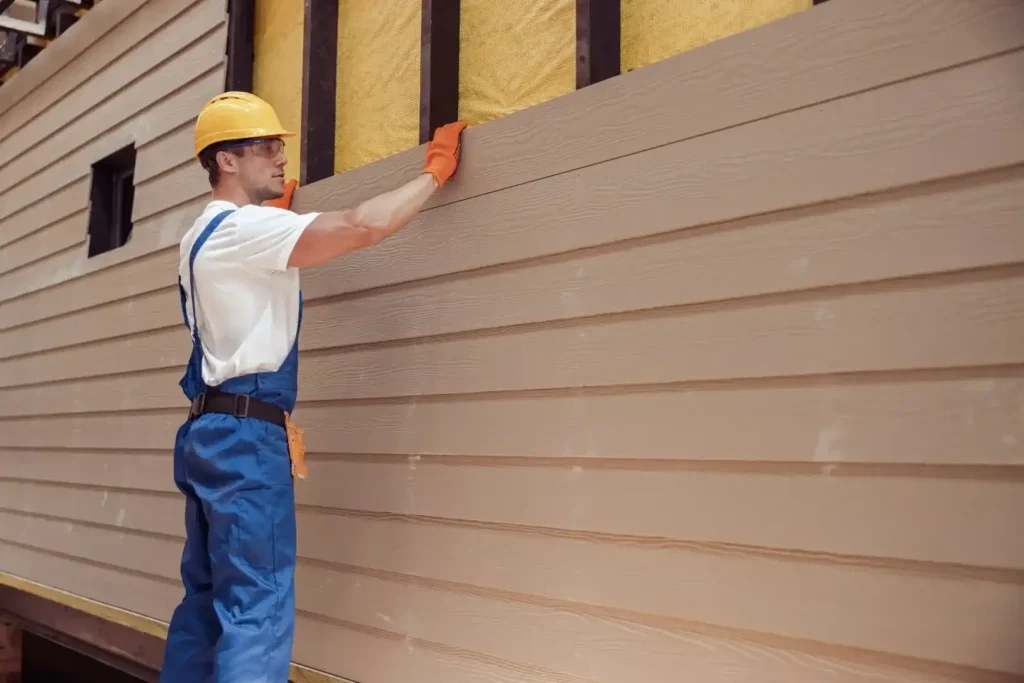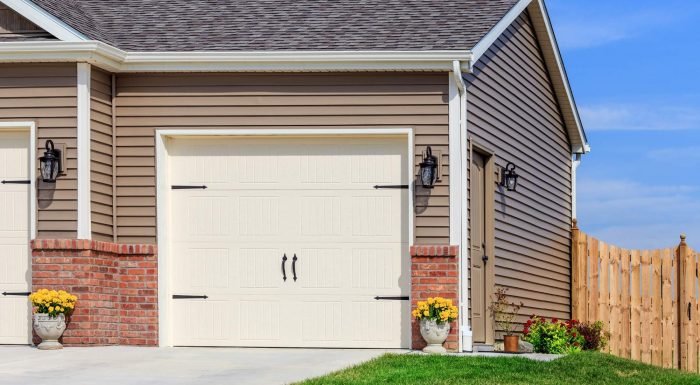Choosing the right siding for your home involves weighing several factors, and two popular options are vinyl siding and fiber cement siding. Vinyl siding, often known for its affordability and low maintenance, is made from PVC resin and comes in a variety of colors and textures. On the other hand, fiber cement siding, composed of cement, sand, and cellulose fibers, offers durability and a more natural appearance resembling wood. Humberto Maradiaga will help you to understanding these distinctions to make an informed decision based on your home’s aesthetic preferences, maintenance preferences, and budget considerations.
Material Composition:
Vinyl siding, like your favorite old-school records, is made from PVC (polyvinyl chloride) resin—think of it as sturdy plastic. It’s designed to withstand the elements, whether it’s rain, snow, or sun, without warping or fading too quickly. This type of siding comes in a rainbow of colors and textures, so you can match it perfectly to your home’s vibe.
On the other hand, fiber cement siding is a bit more like a DIY project gone pro. It’s made from a mix of cement, sand, and cellulose fibers, which gives it a solid, dense feel. This blend not only makes it super tough against bugs, fire, and rot but also gives it that authentic wood-like texture that many homeowners love. Just imagine the durability of cement mixed with the natural look of wood—pretty cool, right?
These materials may sound different, but they both offer unique benefits depending on what you’re looking for in your home’s siding.
Appearance:
Vinyl siding is like the chameleon of home exteriors—it comes in all sorts of colors and textures. Whether you’re into a smooth, sleek finish or want something that mimics the texture of wood grain, vinyl can deliver. It’s known for its ability to retain color over time without much fuss, making it a low-maintenance option for keeping your home looking sharp.
Now, fiber cement siding takes a different approach. It’s got this rugged, natural vibe going on, almost like it’s saying, “Hey, I’m here to stay.” The mix of cement, sand, and cellulose fibers gives it a texture that closely resembles wood grain, which can add a touch of classic charm to your home’s exterior. Plus, it can be painted to match your exact style preferences, making it versatile and timeless.
So, whether you prefer the vibrant versatility of vinyl or the rugged elegance of fiber cement, both options bring their own unique flair to your home’s curb appeal.

Durability:
Vinyl siding is like that reliable friend who always has your back. Made from PVC resin, it’s built to withstand the elements without breaking a sweat. It’s resistant to moisture, insects, and rot, which means you won’t have to worry about it warping or decaying over time. However, in really cold climates, it can become brittle and prone to cracking.
On the other hand, fiber cement siding is the tough guy in the neighborhood. It’s made from a mix of cement, sand, and cellulose fibers, giving it serious strength against fire, insects, and rot. It’s also incredibly sturdy, able to withstand strong winds and impacts. Plus, it doesn’t expand or contract like vinyl, so it holds its shape better over the years.
Both types of siding offer solid durability, but the choice often comes down to your local climate and maintenance preferences.
Maintenance:
Vinyl Siding:
- Low maintenance; generally requires periodic cleaning with a hose and mild soap.
- Resistant to mold and mildew, but may develop dirt buildup over time.
- Color typically lasts without fading, reducing the need for repainting.
- Prone to cracking in extreme cold weather.
- Easy to repair by replacing individual panels if damaged.
Fiber Cement Siding:
- Requires periodic painting or sealing to maintain appearance and protect against moisture.
- Texture can trap dirt and debris, necessitating more thorough cleaning.
- Paint may need touch-ups over time to maintain color vibrancy.
- Resistant to rot, insects, and fire, but can absorb moisture if not properly sealed or maintained.
- More durable in extreme weather conditions compared to vinyl.
Installation:
Vinyl siding is like the lightweight contender in a home renovation match. It’s easy to handle and install, which can save you on labor costs. Because it’s so light, it doesn’t require heavy-duty tools or extensive prep work. Plus, it often comes in interlocking panels that snap into place, speeding up the installation process. It’s a DIY dream for some, though professionals can also make quick work of it.
Now, fiber cement siding is more like the heavyweight champion. It’s heavier and denser, which means it requires more effort to maneuver and install. This type of siding often needs special cutting tools and techniques to handle its thickness and weight. Professionals usually tackle fiber cement installation to ensure it’s done right and to avoid potential mishaps.

Cost:
Vinyl siding tends to be the budget-friendly option in the neighborhood. It’s generally cheaper upfront because the material itself is less expensive and it’s easier and quicker to install. That means you might save on both materials and labor costs, making it a popular choice for homeowners looking to spruce up their exteriors without breaking the bank.
On the other hand, fiber cement siding is more like the investment piece. It comes with a higher initial price tag due to its durable materials and more labor-intensive installation process. While it might cost more upfront, it can pay off in the long run with its durability and lower maintenance needs.
Insulation:
Vinyl siding is like your lightweight jacket—it offers some basic protection but doesn’t provide much insulation on its own. If you want better energy efficiency, you might need to add additional insulation under the siding. The good news is, many newer vinyl siding options come with insulation backing to help boost thermal resistance.
Now, fiber cement siding is more like a thick winter coat—it naturally has more heft and density, which means it offers better insulation properties compared to vinyl. Its thicker composition helps to reduce heat loss and noise transmission, making it a solid choice if energy efficiency is a priority for you.
When it comes to insulation, both types of siding can be effective with the right setup. Whether you opt for vinyl with added insulation or the inherent thermal benefits of fiber cement, choosing the right siding can help improve your home’s comfort and energy efficiency.

Environmental Impact:
Vinyl Siding:
- Made from PVC (polyvinyl chloride), which raises environmental concerns during production and disposal.
- Production of PVC involves chemical processes and may release harmful substances.
- PVC is not biodegradable and can release toxic chemicals if burned.
- Recycling options exist but are limited; often ends up in landfills.
Fiber Cement Siding:
- Generally considered more environmentally friendly due to natural materials like cement, sand, and cellulose fibers.
- Production involves fewer chemicals and toxins compared to PVC.
- Can be recycled after use, reducing landfill waste.
- Durability means longer lifespan and less frequent replacement, reducing overall environmental impact.
FAQ’s:
What are the disadvantages of fiber cement siding?
One disadvantage of fiber cement siding is its higher initial cost compared to some other siding options.
What is another name for fiber cement siding?
Another name for fiber cement siding is “James Hardie siding,” named after the popular brand known for manufacturing this type of siding.
What is the best type of exterior siding?
The best type of exterior siding depends on factors like climate, budget, and aesthetic preferences, with options including fiber cement, vinyl, wood, and engineered wood siding.
Is fiber cement siding waterproof?
Fiber cement siding is not entirely waterproof but is highly resistant to moisture when installed and maintained properly.
What siding is better than vinyl?
Fiber cement siding is often considered better than vinyl for its durability, fire resistance, and more natural appearance resembling wood.
CONCLUSION:
In conclusion, the choice between vinyl siding and fiber cement siding hinges on several key factors. Vinyl siding offers affordability, low maintenance, and a wide range of colors and textures, making it a popular choice for many homeowners. However, it can be prone to cracking in extreme cold and has environmental concerns due to its PVC composition. On the other hand, fiber cement siding boasts durability, resistance to fire, insects, and rot, along with a more natural appearance resembling wood. It requires more upfront investment and periodic maintenance but offers superior longevity and environmental benefits, making it a preferred option for those prioritizing durability and aesthetics.
